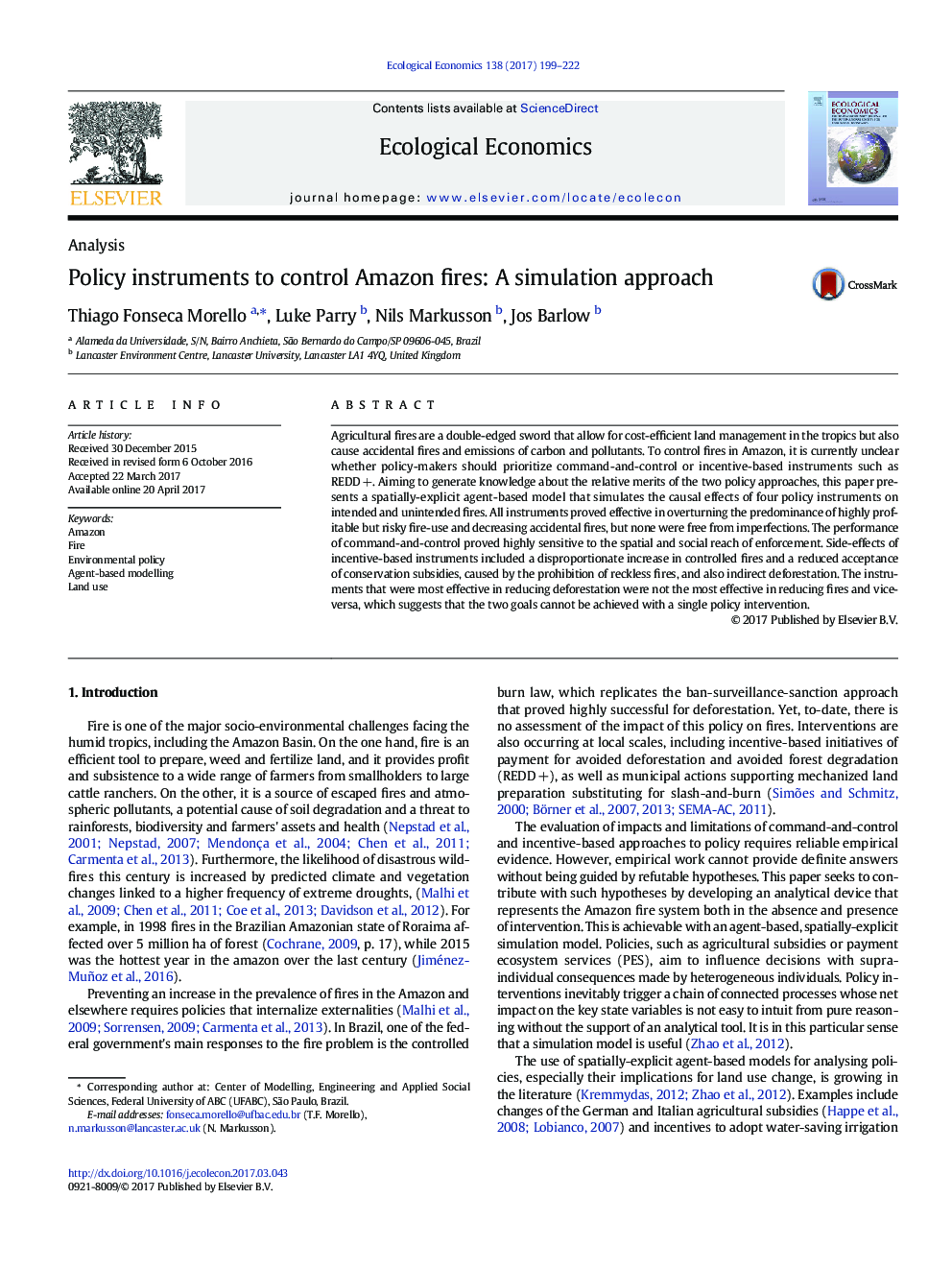| Article ID | Journal | Published Year | Pages | File Type |
|---|---|---|---|---|
| 5048757 | Ecological Economics | 2017 | 24 Pages |
â¢Policy is needed to balance the costs and benefits of Amazonian fires.â¢The four policy instruments simulated proved effective to reduce fires.â¢Command-and-control was undermined by the low resolution of monitoring.â¢Side-effects of incentive-based policies partially negated environmental gains.â¢Deforestation and fire control cannot be achieved with a single policy intervention.
Agricultural fires are a double-edged sword that allow for cost-efficient land management in the tropics but also cause accidental fires and emissions of carbon and pollutants. To control fires in Amazon, it is currently unclear whether policy-makers should prioritize command-and-control or incentive-based instruments such as REDDÂ +. Aiming to generate knowledge about the relative merits of the two policy approaches, this paper presents a spatially-explicit agent-based model that simulates the causal effects of four policy instruments on intended and unintended fires. All instruments proved effective in overturning the predominance of highly profitable but risky fire-use and decreasing accidental fires, but none were free from imperfections. The performance of command-and-control proved highly sensitive to the spatial and social reach of enforcement. Side-effects of incentive-based instruments included a disproportionate increase in controlled fires and a reduced acceptance of conservation subsidies, caused by the prohibition of reckless fires, and also indirect deforestation. The instruments that were most effective in reducing deforestation were not the most effective in reducing fires and vice-versa, which suggests that the two goals cannot be achieved with a single policy intervention.
